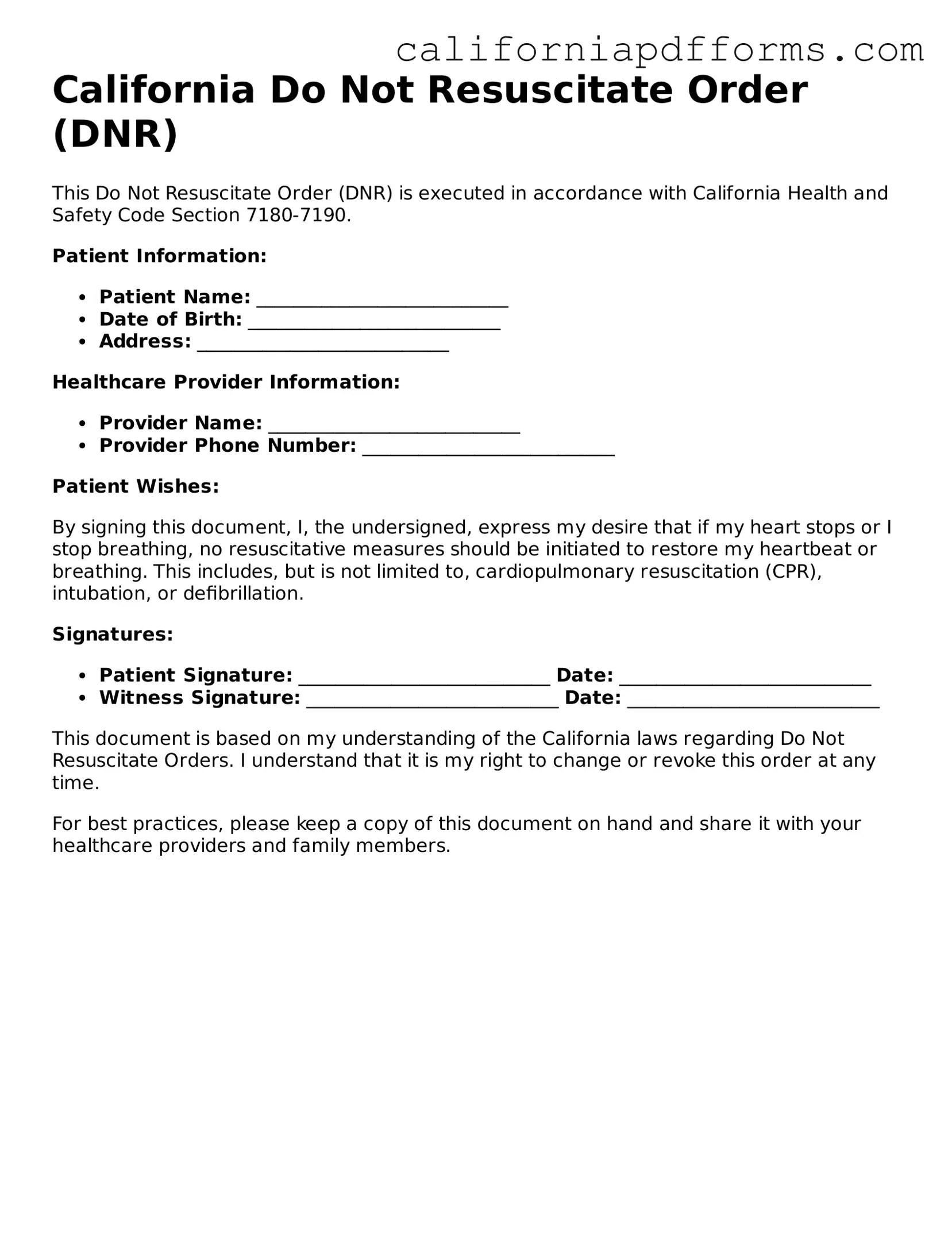What is a California Do Not Resuscitate Order (DNR)?
A California Do Not Resuscitate Order (DNR) is a legal document that allows a person to refuse cardiopulmonary resuscitation (CPR) in the event of a medical emergency. This order is typically used by individuals with serious health conditions who wish to avoid aggressive life-saving measures that may not align with their wishes for end-of-life care.
Who can request a DNR in California?
Any adult who is capable of making their own medical decisions can request a DNR. This includes individuals with terminal illnesses or those who have a limited life expectancy. Additionally, a legally authorized representative, such as a healthcare proxy or power of attorney, can request a DNR on behalf of someone who is unable to make decisions for themselves.
You can obtain a DNR form from various sources, including:
-
Your healthcare provider or physician.
-
Hospitals and medical facilities.
-
California Department of Public Health’s website.
Once you have the form, it must be completed and signed by both you and your physician to be valid.
The DNR form typically requires the following information:
-
Your full name and date of birth.
-
Your physician’s name and contact information.
-
A statement indicating your desire not to receive CPR.
-
Signatures from both you and your physician.
Ensure that all information is accurate and up to date to avoid any complications during a medical emergency.
Is a DNR order valid in all healthcare settings?
Yes, a DNR order is valid across various healthcare settings in California, including hospitals, nursing homes, and emergency medical services. However, it is important to ensure that the order is clearly visible and accessible to all healthcare providers involved in your care.
Can a DNR order be revoked or changed?
Yes, you have the right to revoke or change your DNR order at any time. To do this, simply destroy the existing DNR form and inform your healthcare provider of your decision. It is advisable to create a new DNR form if you wish to establish a different directive.
What should I discuss with my healthcare provider regarding a DNR?
When considering a DNR, it is crucial to have an open discussion with your healthcare provider. Topics to cover include:
-
Your medical condition and prognosis.
-
Your values and preferences regarding end-of-life care.
-
Alternative treatment options and palliative care.
These conversations can help ensure that your healthcare wishes are understood and respected.
Are there any legal implications of having a DNR order?
Having a DNR order is a legally binding directive that informs medical personnel of your wishes regarding resuscitation. It protects healthcare providers from legal liability when they follow the order. However, it is essential to ensure that the DNR is properly executed and that all parties involved are aware of it to avoid any potential misunderstandings.
